- Home
- The Spring Garden
- Bearded Irises
Bearded Irises: The Rainbow of the Garden
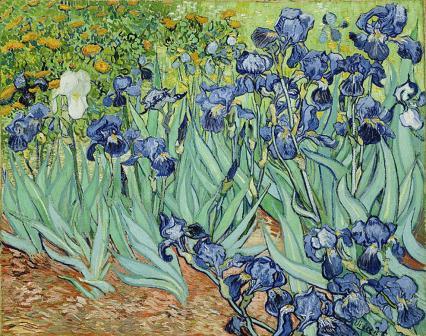 Irises by Vincent Van Gogh
Irises by Vincent Van GoghI would have a hard
time choosing my favorite of all spring blooming flowers. Daffodils, irises, peonies, poppies, roses,
tulips! Too many gorgeous ones to choose
from. Well, fortunately I don't have to
choose, but if I had to, it would probably come down to the iris. The variety
of colors, shapes and bloom times is unequaled among perennials. It is possible to have one kind of iris or
another in bloom almost year 'round. There
are many different types and species of irises, and they are found all over the
world. So many, in fact, that it is hard
to keep them straight. But botanists and
gardeners agree that the simplest way to categorize them is by type of underground
structure from which they grow. They
grow either from rhizomatous tubers or roots, or true bulbs. The irises below
are of the rhizomatous or tuberous sorts, and are further broken down into
“bearded” or “beardless’ irises. For "beardless" irises, please see the "Beardless Irises" page. Please see the "Spring Bulbs" page for irises that grow from true bulbs.
I. Bearded Irises
Bearded irises are distinguished by having a brush of soft hairs at the back of the falls that direct insects to find the pollen within. There are several types of bearded irises including our familiar garden bearded (German) irises, the exotic arils, and certain species such as I. pallida, the orris iris, grown for its root used as a fixative in perfumery.
Aril Irises
A large group of bearded irises, the arils, are not as widely grown as the I germanica hybrids. These are desert species thriving in hot, dry climates. They demand full sun and excellent drainage to prevent rot. The arils have a touch of the exotic, and have some very unusual flower forms and colors distinguished by dark beards and dark signals on the falls. Sometimes the standards are large and wide, even larger than the falls, and the falls are typically curled under. There are many species in the aril group and they are further grouped into Oncocyclus and Regelia species.
Arilbred irises are hybrid crosses between aril irises and bearded (German) irises. They constitute a very exciting and beautiful selection of irises for your garden if you can provide the right conditions. This is a very interesting and rewarding group of irises to grow, but complicated, so for further information, contact these fine organizations devoted to their culture and development. The Aril Society International, www.arilsociety.org; and the Species Iris Group of North America, www.signa.org.
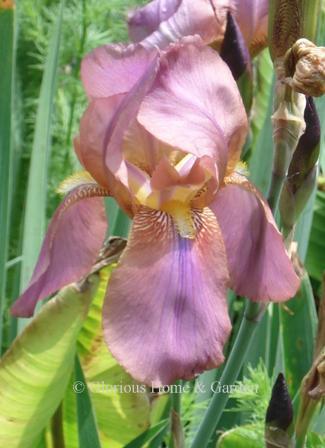 Arilbrerd Iris 'Rosemohr'
Arilbrerd Iris 'Rosemohr'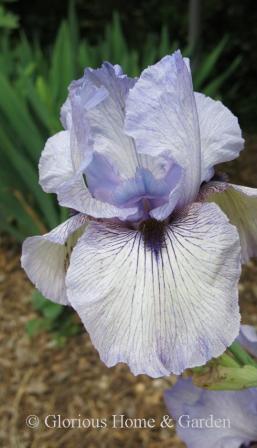 Arilbred iris 'Walker Ross'
Arilbred iris 'Walker Ross'Bearded (German) Iris Hybrids
Iris germanica, bearded iris hybrids, 3-10. Everyone's idea of what an iris should be, bearded or German irises are indispensable in the spring garden. Named for the Greek goddess of the rainbow, bearded irises come in nearly every color, from pure white to nearly black. Pure red is the one color that eludes iris hybridizers. Growers dig the rhizomes in the summer for late summer and fall planting. They are best grown in full sun, and benefit from division every few years when the bloom starts to decline. Bearded irises are further divided into six classifications based on size and bloom time: Miniature Standard Dwarf Bearded (up to 8” h.), Standard Dwarf Bearded (about 8-16” h.), Intermediate Bearded (about 16-27 ½” h.), Border Bearded (16-27 ½” h. but bloom later than the Intermediates), Miniature Tall Bearded (16-27 ½” h. w/smaller flowers), and Tall Bearded (over 27 ½” h.) With so many choices, one can have the right iris for almost any situation.
The form of bearded irises has changed over time. Older, historic irises often have simpler shapes with falls that hang straight down, and standards and falls with smooth or very slightly ruffled edges. More recent irises are quite different with flaring falls and often have very ruffled standards and falls. Compare ‘Alcazar’ with ‘Mystic Art,’ for instance.
“Tetraploid” refers to the chromosome makeup of these irises. They have double the chromosomes of older diploid types resulting in larger flowers, velvety texture, improved substance, taller plants, and a wider range of colors. Most modern irises are tetraploid.
The W. R. Dykes Memorial Medal is the highest honor given by the American Iris Society to the most outstanding iris of the year.
The John C. Wister Medal is awarded to the top three tall bearded (TB) irises each year by the American Iris Society.
Tall Bearded Irises
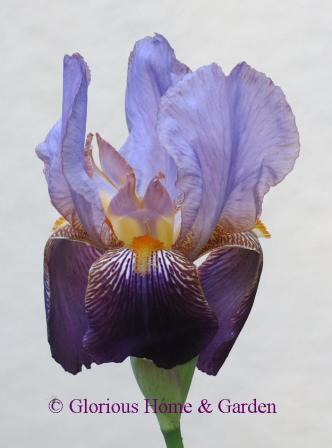 Iris germanica 'Alcazar,' bitone, tetraploid, Vilmorin, 1910.
Iris germanica 'Alcazar,' bitone, tetraploid, Vilmorin, 1910.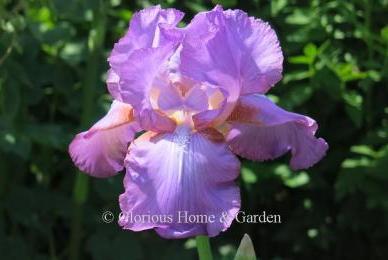 Iris germanica ‘Amethyst Flame,’ self, tetraploid, R. Schreiner, 1957. Dykes Medal 1963.
Iris germanica ‘Amethyst Flame,’ self, tetraploid, R. Schreiner, 1957. Dykes Medal 1963.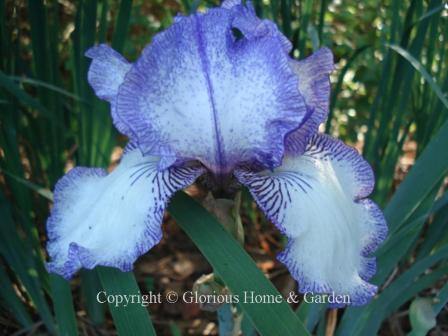 Iris germanica ’Autumn Circus,’ plicata, reblooms, tetraploid, Hager, 1990.
Iris germanica ’Autumn Circus,’ plicata, reblooms, tetraploid, Hager, 1990.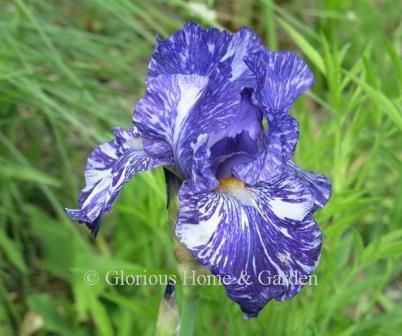 Iris germanica ‘Batik,’ broken pattern, tetraploid, Ensminger, 1985.
Iris germanica ‘Batik,’ broken pattern, tetraploid, Ensminger, 1985.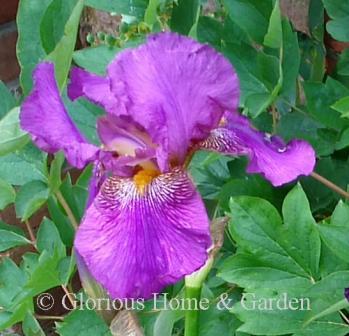 Iris germanica ‘Benton Evora,’ self, tetraploid, C. Morris, 1956.
Iris germanica ‘Benton Evora,’ self, tetraploid, C. Morris, 1956.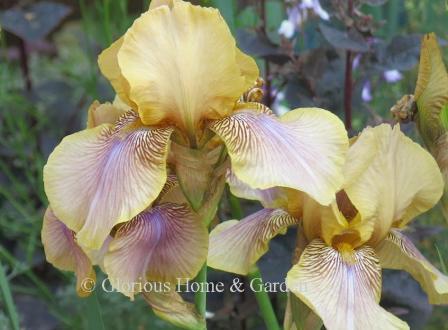 Iris germanica,‘Benton Olive,’ blend, C. Morris, 1949.
Iris germanica,‘Benton Olive,’ blend, C. Morris, 1949.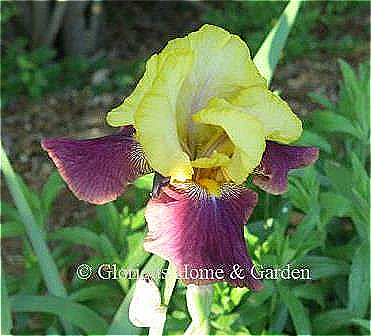 Iris germanica ‘Blatant,’ bicolor, reblooms, tetraploid, Byers, 1989.
Iris germanica ‘Blatant,’ bicolor, reblooms, tetraploid, Byers, 1989.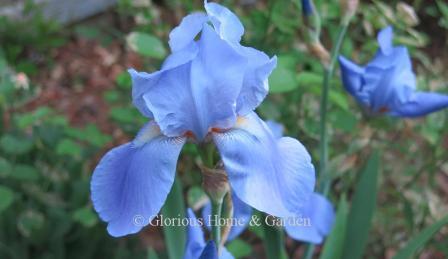 Iris germanica ‘Blue Rhythm,’ self, Whiting, 1945. Dykes Medal 1950.
Iris germanica ‘Blue Rhythm,’ self, Whiting, 1945. Dykes Medal 1950.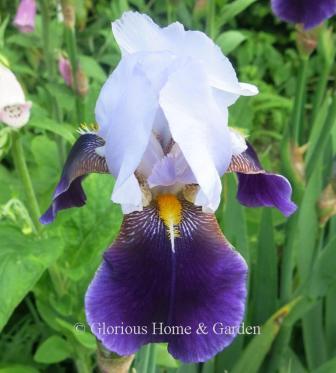 Iris germanica ‘Braithwaite,’ neglecta, tetraploid, Randall, 1952.
Iris germanica ‘Braithwaite,’ neglecta, tetraploid, Randall, 1952.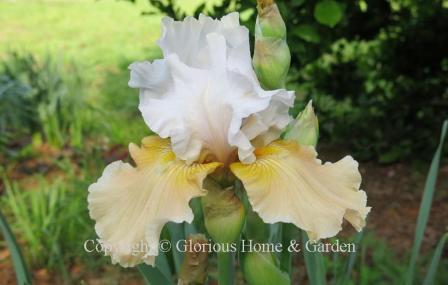 Iris germanica ’Champagne Elegance,’ bicolor, tetraploid, Niswonger, 1986.
Iris germanica ’Champagne Elegance,’ bicolor, tetraploid, Niswonger, 1986.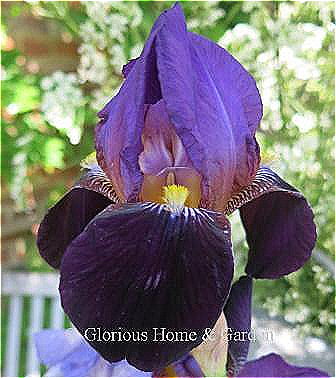 Iris germanica ‘Cinnabar,’ bitone, Williamson, 1928.
Iris germanica ‘Cinnabar,’ bitone, Williamson, 1928.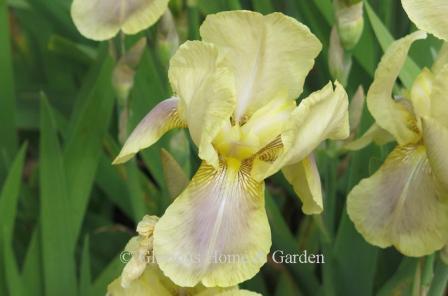 Iris germanica ‘Cleo Murrell,’ blend, O. Murrell, 1941.
Iris germanica ‘Cleo Murrell,’ blend, O. Murrell, 1941.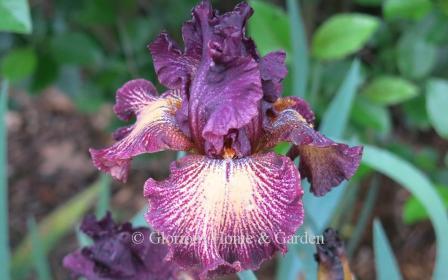 Iris germanica ‘Drama Queen,’ plicata, tetraploid, Keppel, 2002. Dykes Medal 2011. Wister Medal 2009.
Iris germanica ‘Drama Queen,’ plicata, tetraploid, Keppel, 2002. Dykes Medal 2011. Wister Medal 2009.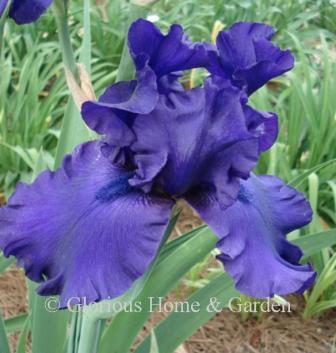 Iris germanica ‘Dusky Challenger,’ self, tetraploid, Schreiner, 1986. Dykes Medal 1992.
Iris germanica ‘Dusky Challenger,’ self, tetraploid, Schreiner, 1986. Dykes Medal 1992.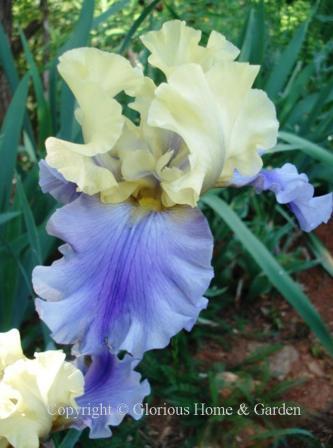 Iris germanica ’Edith Wolford,’ bi-color, tetraploid, Hager, 1984. Dykes Medal 1993.
Iris germanica ’Edith Wolford,’ bi-color, tetraploid, Hager, 1984. Dykes Medal 1993.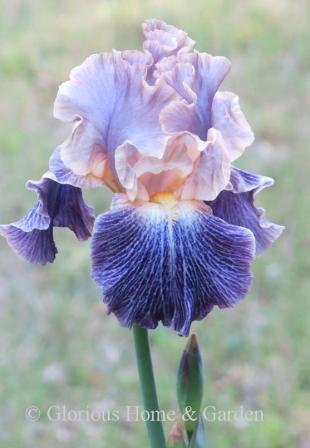 Iris germanica ‘Elizabethan Age,’ luminata, tetraploid, Baumunk, 2005. Wister Medal 2013.
Iris germanica ‘Elizabethan Age,’ luminata, tetraploid, Baumunk, 2005. Wister Medal 2013.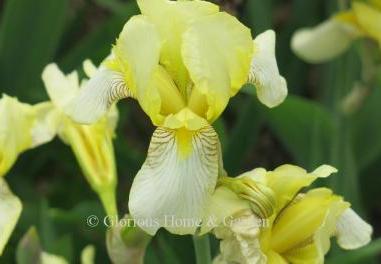 Iris germanica ‘Flavescens,’ self, a wild occurring hybrid, De Candelle, 1813.
Iris germanica ‘Flavescens,’ self, a wild occurring hybrid, De Candelle, 1813.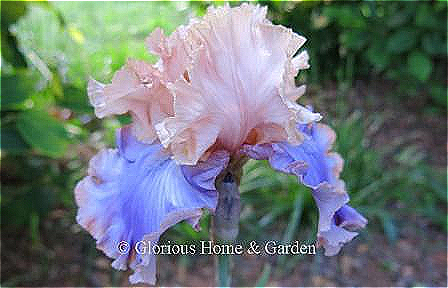 Iris germanica ‘Florentine Silk,’ bicolor, tetraploid, Keppel, 2004. Dykes Medal 2012. Wister Medal 2013.
Iris germanica ‘Florentine Silk,’ bicolor, tetraploid, Keppel, 2004. Dykes Medal 2012. Wister Medal 2013.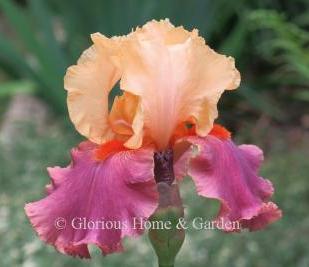 Iris germanica ‘Frimousse,’ bicolor, tetraploid, Cayeux, 1999.
Iris germanica ‘Frimousse,’ bicolor, tetraploid, Cayeux, 1999.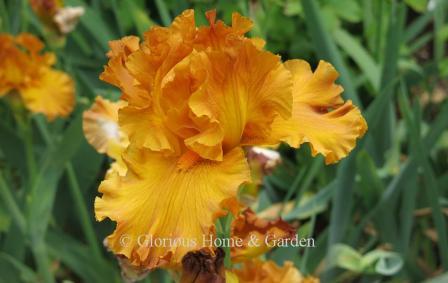 Iris germanica ‘Golden Panther,’ blend, tetraploid, Tasco, 2000. Dykes Medal 2009. Wister Medal 2006.
Iris germanica ‘Golden Panther,’ blend, tetraploid, Tasco, 2000. Dykes Medal 2009. Wister Medal 2006.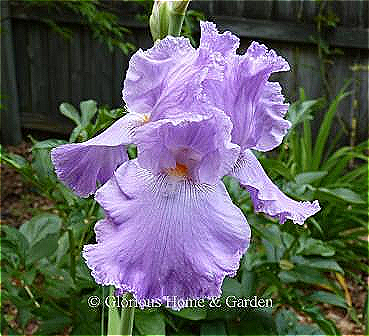 Iris germanica 'Italic Light,’ self, tetraploid, Schreiner, 2012.
Iris germanica 'Italic Light,’ self, tetraploid, Schreiner, 2012.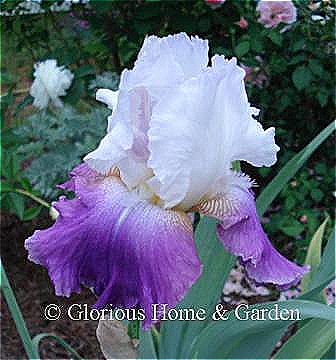 Iris germanica ‘Jazzed Up,’ amoena (white standards and colored falls), tetraploid,
Schreiner, 1994.
Iris germanica ‘Jazzed Up,’ amoena (white standards and colored falls), tetraploid,
Schreiner, 1994.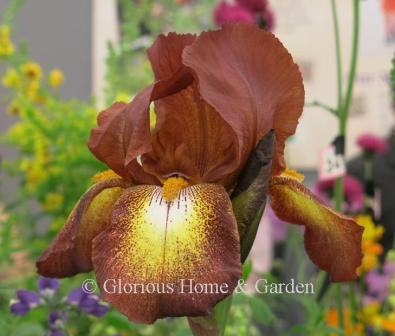 Iris germanica ‘Kent Pride,’ plicata, tetraploid, Hutchison, 1958.
Iris germanica ‘Kent Pride,’ plicata, tetraploid, Hutchison, 1958.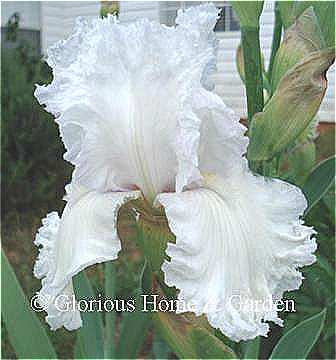 Iris germanica ’Laced Cotton,’ self, tetraploid, Schreiner, 1978.
Iris germanica ’Laced Cotton,’ self, tetraploid, Schreiner, 1978.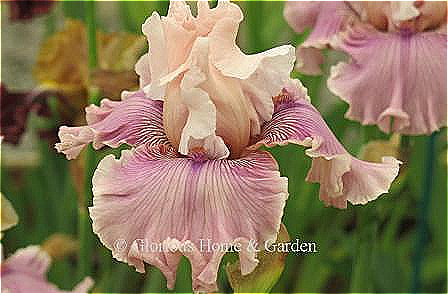 Iris germanica ‘Mystic Art,’ tetraploid, T. Johnson, 2019.
Iris germanica ‘Mystic Art,’ tetraploid, T. Johnson, 2019.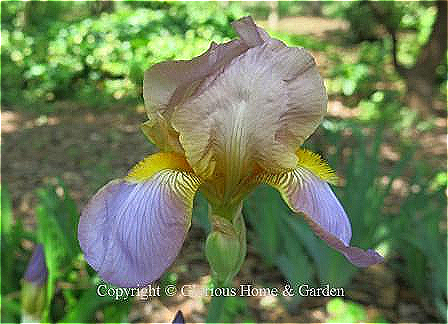 Iris germanica ‘Quaker Lady,’ blend, Farr, 1909.
Iris germanica ‘Quaker Lady,’ blend, Farr, 1909.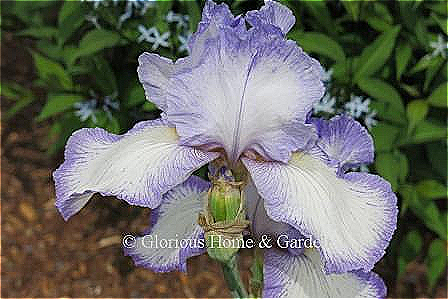 Iris germanica ‘Queen Dorothy,’ plicata, reblooms, Hall, 1984.
Iris germanica ‘Queen Dorothy,’ plicata, reblooms, Hall, 1984.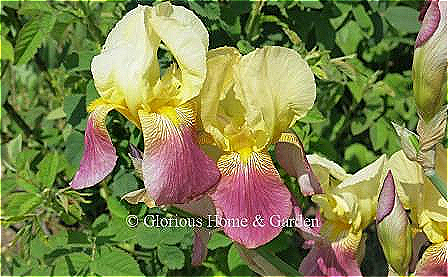 Iris germanica ’Shannopin,’ bi-color, Pillow, 1939.
Iris germanica ’Shannopin,’ bi-color, Pillow, 1939.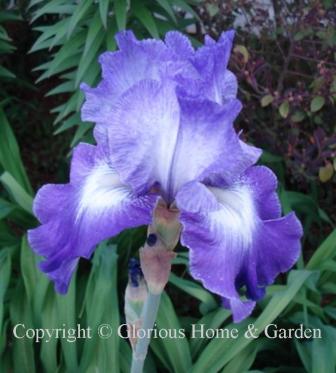 Iris germanica ’Suky,’ bi-tone, tetraploid, Mahan, 1988.
Iris germanica ’Suky,’ bi-tone, tetraploid, Mahan, 1988.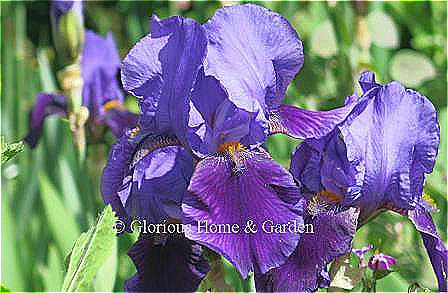 Iris germanica ‘The Black Douglas,’ bitone, Sass, 1934.
Iris germanica ‘The Black Douglas,’ bitone, Sass, 1934.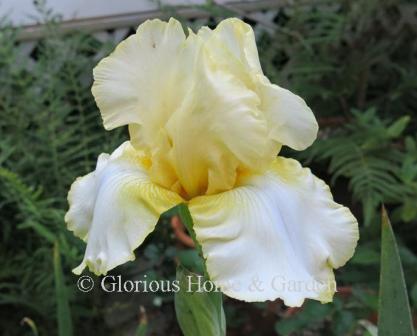 Iris germanica ‘Total Recall,’ pale yellow and white, reblooms, tetraploid, Hager, 1992.
Iris germanica ‘Total Recall,’ pale yellow and white, reblooms, tetraploid, Hager, 1992.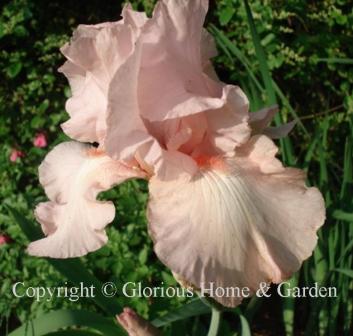 Iris germanica ’Vanity,’ self, tetraploid, Hager, 1974. Dykes Medal 1982.
Iris germanica ’Vanity,’ self, tetraploid, Hager, 1974. Dykes Medal 1982.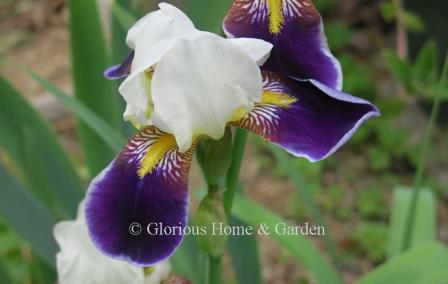 Iris germanica ‘Wabash,’ amoena, Williamson, 1936 Dykes Medal 1940.
Iris germanica ‘Wabash,’ amoena, Williamson, 1936 Dykes Medal 1940.Dwarf, Standard, and Intermediate Bearded Irises
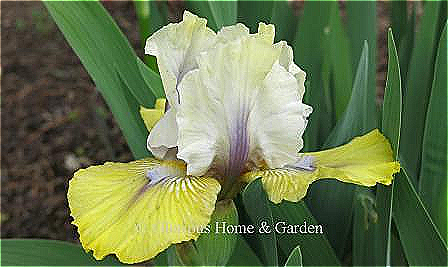 Iris ‘Double Your Fun,’ intermediate, unbalanced tetraploid, early-mid, reblooms, 21”, J. T. Aitken, 2000
Iris ‘Double Your Fun,’ intermediate, unbalanced tetraploid, early-mid, reblooms, 21”, J. T. Aitken, 2000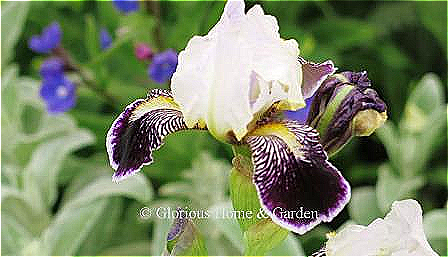 Iris ‘Frosted Velvet’ purple and white amoena, miniature tall bearded, diploid, midseason, 22 ½”, K. Fisher, 1988. Williamson-White medal winner 1995.
Iris ‘Frosted Velvet’ purple and white amoena, miniature tall bearded, diploid, midseason, 22 ½”, K. Fisher, 1988. Williamson-White medal winner 1995.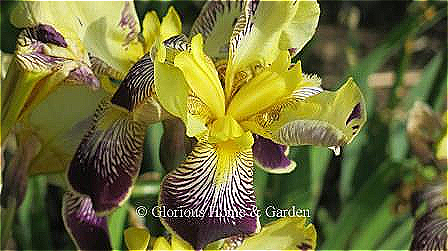 Iris ‘Loreley,’ intermediate, unbalanced tetraploid, mid season, Goos and Koenemann, 1909.
Iris ‘Loreley,’ intermediate, unbalanced tetraploid, mid season, Goos and Koenemann, 1909.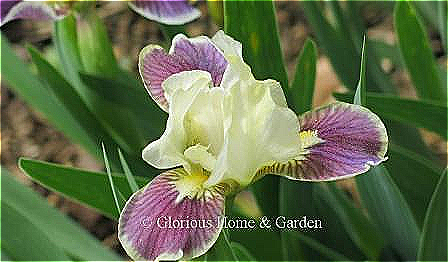 Iris ‘Making Eyes,’ cream standards, violet falls, standard dwarf, amphidiploid, early, 12-141/2.” B. Blyth, 1982..
Iris ‘Making Eyes,’ cream standards, violet falls, standard dwarf, amphidiploid, early, 12-141/2.” B. Blyth, 1982..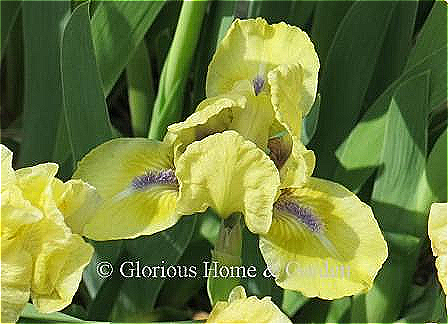 Iris ‘Prank,’ standard dwarf, amphidiploid, early-mid season, 9,” K. Keppel, 2000.
Iris ‘Prank,’ standard dwarf, amphidiploid, early-mid season, 9,” K. Keppel, 2000.Bearded iris Species
Iris albicans, cemetery iris, Zones 4-9. Pure white with yellow beards, I albicans is a natural hybrid of I germanica. It was commonly used on gravesites in the Middle East, hence the common name, and the tradition was continued when it was brought to the U.S. in the 19th c. It is early blooming and very robust.
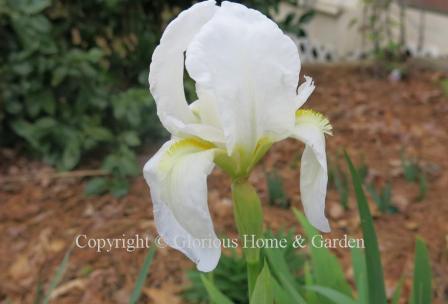 Iris albicans
Iris albicansIris x germanica var. florentina,
orris iris, Zones 4-10. The root of this
iris is aromatic with a scent of violets. The dried root has long been used as
a fixative in perfumes and potpourris to make the scent last longer. Interestingly, it is also an ingredient in
gin. Besides that, it makes a lovely
addition to the perennial border, blooming in April-May. The fragrant flowers are white with the
palest lavender tint to them, the falls are long and drooping with yellow
beards, and rise on stalks to about 24-30."
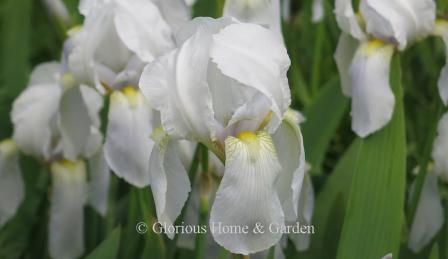 Iris germanica var. florentina
Iris germanica var. florentinaIris pallida var. dalmatica, Dalmatian or sweet iris, Zones 4-9. This iris is also grown and harvested for its roots to use as a fixative for perfumes and potpourris. A native of Italy, I pallida has flowers of a rich lavender-blue with a fragrance redolent of grapes. Grow I. pallida var. dalmatica in your garden for color, scent and a sense of history.
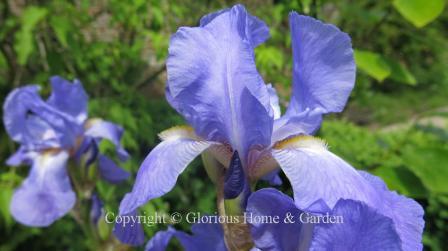 Iris pallida var. dalmatica
Iris pallida var. dalmaticaIris pallida ‘Aurea-Variegata,’ is a variegated version that has foliage striped with gold or cream or white. The flowers are lighter in color than the Dalmatian iris, but they both have the same intriguing grape-like scent. Marvelous for adding foliage contrast to the garden.
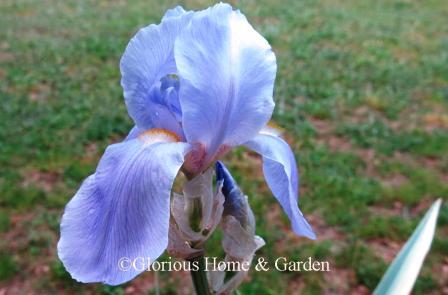 Iris pallida 'Aurea-Variegata'
Iris pallida 'Aurea-Variegata'Plant of the Month
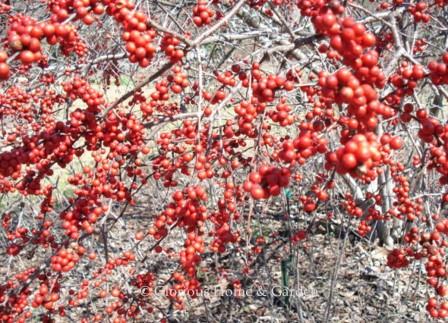
Ilex verticillata
Winterberry holly
Updated new USDA Plant Hardiness Zone Map 2023.